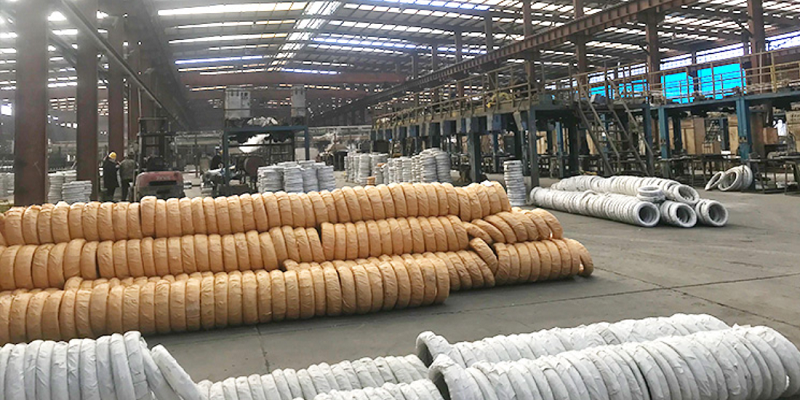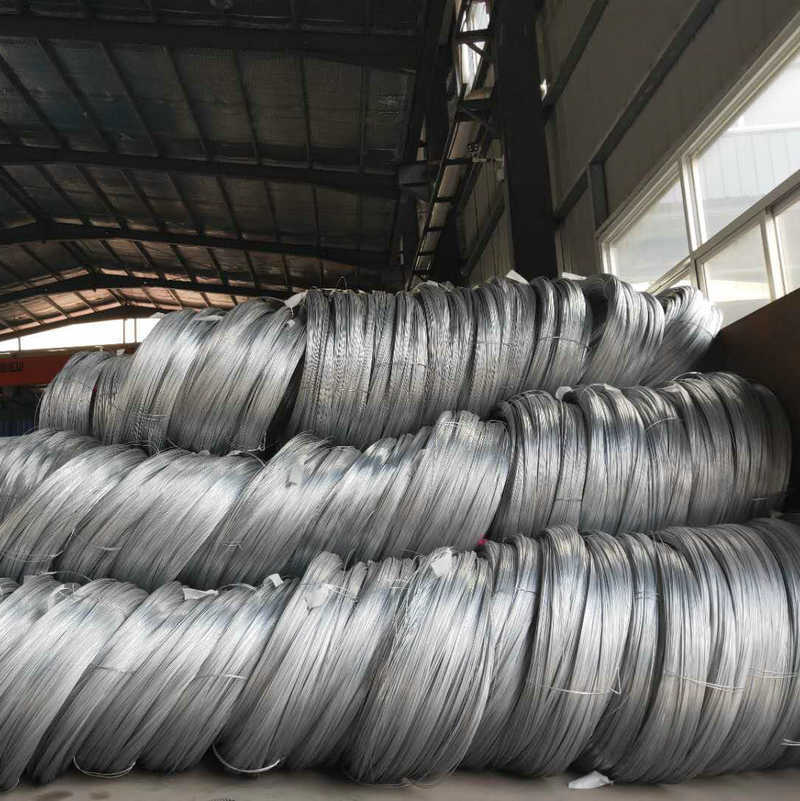Spring steel wire
Spring steel wire is a kind of steel wire used to make springs (SPRING) or wire forms (WIRE FORM). According to the different uses of springs, there are many types of spring steel wires required for making springs, such as spring steel wires for mattress springs (referred to as mattress steel wires), spring steel wires for shock absorbers, spring steel wires for suspension springs, spring steel wires for engine valves, and spring steel wires for camera shutters, etc. Although there is no unified standard classification name, the quality requirements of these steel wires are different. Spring steel wires can also be classified according to the manufacturing process, such as raw spring steel wires (not quenched in a lead bath before drawing), lead quenched spring steel wires, galvanized spring steel wires, oil quenched spring steel wires, etc. The strength of spring steel wires varies according to varieties, standards and specifications, and the tensile strength grade can be in the range of 1000-3000 MPa. The diameter of round spring steel wires ranges from 0.08 to 20 mm. The cross-sectional shape of spring steel wire is generally round, but it can also be rectangular, square, oval, etc. The finished steel wire is generally delivered in rolls, but it can also be delivered in straight strips.

Springs used in different environments have different special requirements for steel wire. For example: springs working in corrosive media require good corrosion resistance; springs in precision instruments require long-term stability and sensitivity; springs in high-temperature environments require sufficient elastic limit and creep resistance.
Steel wire for manufacturing springs of various types and uses.
The main types are:
(1) Steel wire for cold-rolled springs. This type of spring is not heat-treated after cold-rolling or is only used after low-temperature heating. It is mainly carbon spring steel wire;
(2) Spring steel wire that is heat-treated after winding. It is mainly alloy spring steel wire;
(3) Quenched and tempered spring steel wire, also known as oil quenched and tempered spring steel wire;
(4) Stainless spring steel wire. This type of steel wire is mostly made of austenitic stainless steel. Its production characteristics are shown in alloy steel wire. In addition, there is also deformation heat-treated steel wire under development.

Carbon spring steel wire should have high tensile strength, elastic limit, toughness and fatigue strength, and be resistant to impact and vibration. Ensuring strength and toughness indicators, especially preventing torsion cracks, is the key to producing spring steel wire. The intrinsic quality and surface quality of the wire rod directly affect the performance of the wire. Carbon spring steel wire is made of high-carbon high-quality carbon structural steel or carbon tool steel wire rod, and its chemical composition, gas content and non-metallic inclusions must be strictly controlled according to the purpose of the spring. In order to reduce surface defects and decarburization layer, the steel billet for producing wire rods should be surface ground and peeled if necessary. Wire rods should be normalized or sulphurized, and large specifications should be replaced by spheroidizing annealing. Soldering treatment is widely used in intermediate heat treatment, especially before drawing of finished products. Decarburization should be prevented during heat treatment. After heat treatment, sulfuric acid or hydrochloric acid pickling is used to remove iron oxide scale. Coating (see lubricating carrier) can be lime dipped, phosphating, borax treatment or copper plating. The drawing process of the finished product drawing has a great influence on the product performance. Generally, a larger total reduction rate of about 90% (see area reduction rate) and a smaller pass reduction rate (about ≤23%) are used to ensure the toughness of the product. For high-strength spring steel wire, the outlet temperature of each pass of the steel wire should be controlled below 150℃ during drawing to prevent the steel wire from torsional cracks due to strain aging, which is the main defect that causes the steel wire to be scrapped. For this reason, good lubrication and sufficient cooling must be provided during drawing. A smaller pass reduction rate and drawing speed can help reduce the temperature rise of the steel wire. After drawing, there is a large residual stress in the steel wire, which affects its performance. It can be eliminated by online straightening or low-temperature (180-370℃) heating.
Alloy spring steel wire is made of alloy spring steel such as silicon-manganese, chrome-vanadium, etc. Incomplete annealing is used to soften the wire rod. Decarburization should be prevented during heat treatment, and the precipitation of graphite carbon should also be prevented for silicon-containing spring steel wire rods. Recrystallization annealing is used for the heat treatment of semi-finished products. The pickling and coating processes are similar to those for the production of carbon spring steel wire. According to needs, silicon manganese spring steel wire has different delivery states such as cold drawing, annealing, normalizing, high temperature tempering, silver bright and oil quenching-tempering; chrome vanadium spring steel wire has different delivery states such as cold drawing, annealing, silver bright. Generally, alloy spring steel wire must be quenched and tempered at medium temperature before it can be used after being wound into springs.
Tempered spring steel wire mainly includes oil quenching-tempering carbon spring steel wire and silicon manganese alloy spring steel wire, oil quenching-tempering carbon spring steel wire and chrome silicon alloy spring steel wire for valves. The purpose of oil quenching-tempering quenching and tempering after spring steel wire drawing is to make the steel wire have higher elastic limit and yield strength ratio as well as good toughness and fatigue resistance. Springs made of quenched-tempered steel wire have stable geometric shape and mechanical properties, small load fluctuations, and can be heated at a temperature lower than the tempering temperature to eliminate the residual stress generated during winding.
Post time: Feb-20-2025